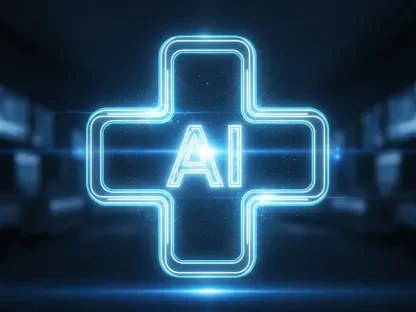Listen to the Article
Just like that, 2025 is here. Looking toward the year, it can arguably be said that the healthcare industry is facing fundamental change. Three powerful forces—artificial intelligence (AI), health equity, and telehealth—will change the way care is delivered, accessed, and experienced.
In this context, this article will delve into how these trends are making waves and what they mean for the sector’s B2B stakeholders.
Ai: The Catalyst for Precision and Efficiency
Artificial intelligence (AI)—as the name implies—has become a game-changer, aiding healthcare personnel by being the key to medical imaging. This technology has become a highly valued tool that will set the course of the healthcare industry—by providing faster, cheaper, and more accurate diagnoses as well as the efficiency of treatment plans than their human counterparts.
Transforming Diagnostics
Let’s talk diagnostics, AI tools are already making a difference in this department. As an example, deep learning algorithms can be utilized to read medical imaging, such as X-rays, MRIs, and CT scans, with speed and accuracy that even human experts cannot boast. Companies like Aidoc and Zebra Medical Vision are leading the charge, shortening turnaround times for diagnostics, and enhancing clinical outcomes. These technologies are expected to be a standard part of clinical workflows this year, greatly facilitating cancer and cardiovascular diseases early detection in young patients.
Enhancing Operational Efficiency
AI innovations are improving the ways that businesses work, too. Appointment scheduling is no longer manual thanks to AI-based systems, while resource allocation in hospitals has also been optimized. AI-driven resources management systems help break down key organizational bottlenecks and lower capital costs. According to a McKinsey report, it is estimated that healthcare organizations adopting AI for operations could save drastically, with venture capital (VC) funding for the top 50 firms in healthcare-related AI reaching $8.5 billion.
Personalized Medicine
AI is also a powerful tool in the realm of personalized medicine. Its ability to discern genetic data, electronic medical records, and lifestyle information allows it to create customized treatment plans for individual patients. This approach, besides enhancing patient care, is also making the process of drug development more efficient, as is the case with companies TempusAI and Deep Genomics.
Health Equity: Closing the Gaps
Health equity—the state in which everyone has a fair and just opportunity to attain their highest level of health—is now at the center of the healthcare industry’s discussion, and for very good reason. Disparities in access to care, care outcomes, and affordability have been a problem for this industry for decades. Initiatives created by technology and policy to address these issues are now being implemented: Telehealth.
Expanding Access to Underserved Communities
Telehealth, mobile clinics, and community-based programs are some of the ways in which health outreach has been made to the communities that have often been neglected in the past. A really good example is getting telehealth equipment to the needy and improving the same facilities that urban neighborhoods are using.
Data-driven Decision-making
AI is playing a big part in the remedying of health disparities by the identification of patterns and inequities in the delivery of healthcare. For example, predictive analytics can be used to identify the areas where the chronic disease rate is the highest, and the interventions can be directed at the community that is most needy. Integrity Health Catalyst, recently named to Newsweek’s 2024 list of Best Digital Health Companies in the World, is already ahead with this approach.
Cultural Competency
Ensuring equity in healthcare is not only about providing access, but also offering quality services. Cultural competency training for healthcare staff, as well as the use of AI for translations in different languages, are some steps being taken to address communication and understanding issues. If things continue this way in 2025, there will be greater satisfaction from patients across different cultures.
Telehealth: The New Normal
The COVID-19 pandemic served as a test bed for telehealth, and the effect of telemedicine on this segment of medicine is permanent. In 2025, sectors are going to witness the evolution of telehealth from virtual doctor visits to the most effective one-stop-shop for the delivery of holistic care.
Remote Monitoring and Chronic Care Management
Remote patient monitoring (RPM) is the bread and butter of telehealth’s future. Devices that measure vital signs, blood glucose, and electrocardiogram (ECG) for patients are giving them the power to manage chronic conditions. This affords patients the luxury of being safely at home, with maximum comfort.
Mental Health Services
Telehealth services also fill critical gaps in mental healthcare. Companies such as BetterHelp and Talkspace have created virtual therapy services to address the rising demand for psychological services, particularly in areas where the supply of providers is low. Telepsychiatry and teletherapy are projected to contribute significantly to mental healthcare delivery this year.
Integration With Wearables and Iot
Another trend that deserves the close attention of the healthcare industry—from smartwatches that detect arrhythmias to connected inhalers for asthma management—is the incorporation of telehealth with wearables and the Internet of Things (IoT). This allows for real-time health tracking and better patient engagement. Moreover, telehealth platforms are built to intuitively work alongside these devices, establishing a unified ecosystem of customer care.
The Intersection of Ai, Equity, and Telehealth
In healthcare, the real power of these trends lies in their intersection. The improvement of telehealth platforms through the addition of AI that supports these tools through real-time analytics and decision support is a certain medical trend. Meanwhile, health equity initiatives are making sure that these technologies are available for everyone, not just the privileged. As a result, a healthcare system that is more inclusive, effective, and efficient is being built.
Let’s take, for instance, a rural patient with diabetes: Telehealth allows them to check in with an endocrinologist online. Data on glucose monitoring is analyzed by AI algorithms to produce instructions that will be effective in the patient’s case, while predictive analytics spot potential complications before they become serious. In parallel, equity-oriented programs guarantee that the patient has access to affordable internet connection and the necessary gadgets, thus cutting all the barriers for them.









